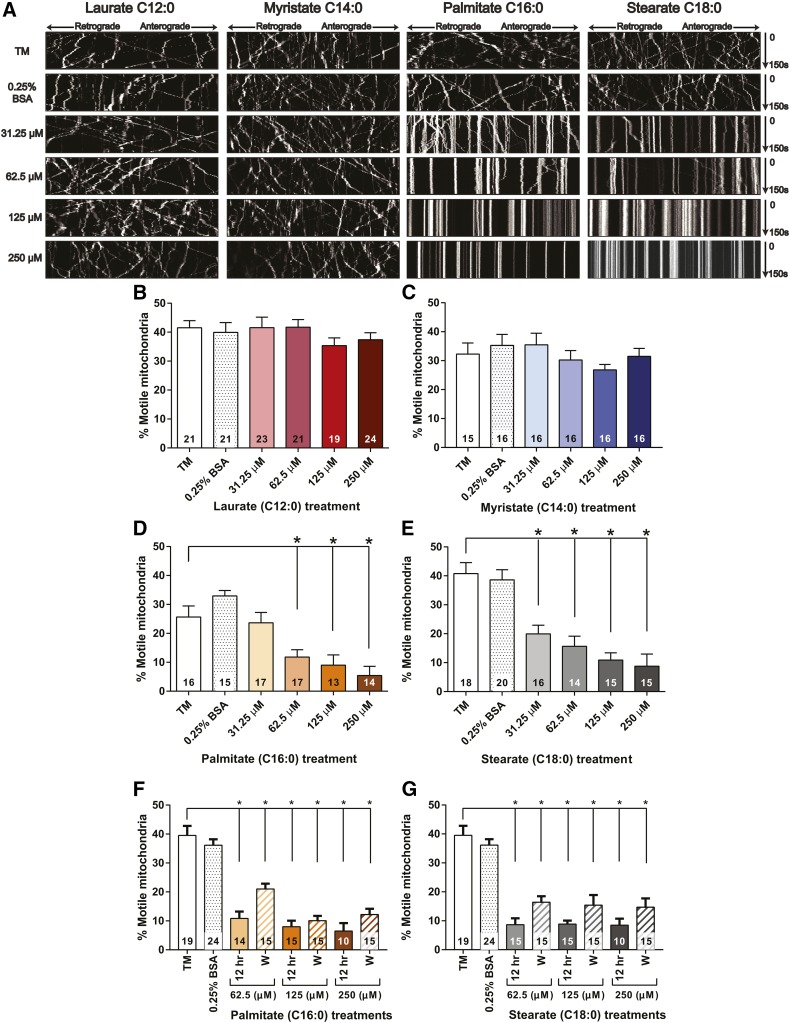Fig. 1.
LCSFAs palmitate and stearate induce a dose-dependent decrease in mitochondrial trafficking in mouse DRG neurons. A: Representative kymographs from each treatment condition show the movement of individual mitochondria (white lines) from 0 to 150 s. Anterograde moving mitochondria (→) are identified as lines moving toward the right of the kymograph, and retrograde mitochondria (←) migrate toward the left of the kymograph as the time progresses from 0 to 150 s. A distinct decrease in the number of motile mitochondria was observed in DRG neurons treated with increasing concentrations of palmitate and stearate compared with laurate and myristate. B, C: Laurate and myristate had no significant impact on the percent motile mitochondria. D: Palmitate induced a dose-dependent decrease in the percent motile mitochondria at concentrations ranging from 62.5 to 250 μM. E: Stearate induced a dose-dependent reduction in mitochondrial trafficking from 31.25 to 250 μM. F, G: Mitochondrial transport was partially recovered in DRG neurons exposed to a 12 h TM wash (W) after a 12 h palmitate (F) or stearate (G) treatment at all concentrations ranging from 62.5 to 250 μM. The percentage of motile mitochondria was slightly increased compared with the 12 h palmitate (F) or stearate treatments (G), but the increase in axonal mitochondrial trafficking was not significant. The number within each bar represents the total number of DRG neurons that were evaluated for each treatment condition across three separate experimental trials. Values are expressed as mean ± SEM. * P < 0.01, ordinary one-way ANOVA with Tukey’s multiple-comparisons test.

